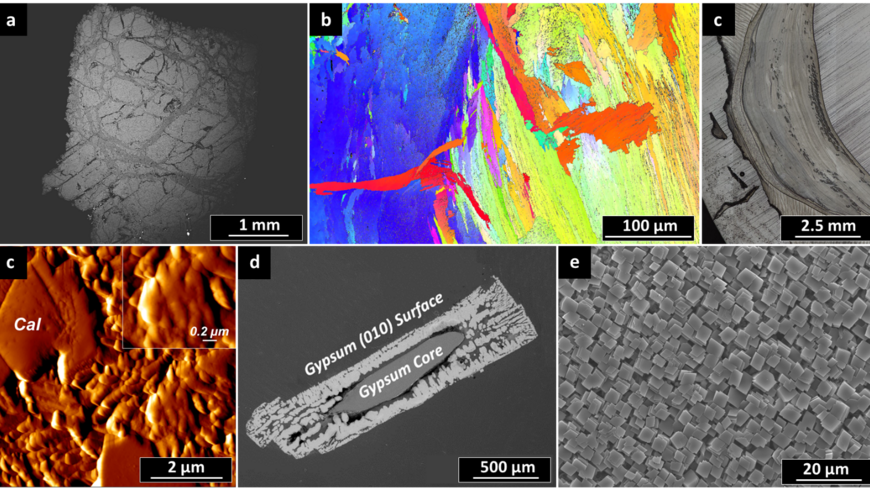Experimental Diagenesis and Mineral Transformation Phenomena of Sedimentary Carbonates and Sulphates
In the Earth's crust, minerals undergo constant interaction with aqueous fluids, which often results in the dissolution of primary minerals and the precipitation of new phases. This phenomenon holds particular significance in low-temperature surface and subsurface environments, where such interactions play a key role in sediment diagenesis, ore deposit weathering, and the formation of secondary metal-bearing accumulates, among other geological processes. Carbonates and sulfates rank as some of the most abundant and widely distributed minerals in the lithosphere, after silicates. Furthermore, they are the primary components of the so-called "chemical sediments". Both mineral groups play a critical role in reconstructing the physicochemical evolution of oceans and the atmosphere, offering valuable insights into the historical changes in global climate over the Earth's history.
The primary objective of this project is to enhance our understanding of the intrinsic and extrinsic parameters (crystallographic, mineralogical, chemical, textural and microstructural) that govern the viability and kinetics of fluid-driven mineral replacement processes involving sedimentary sulphates and carbonates. To achieve this goal, we conduct experiments on the interaction of sulphates and carbonates, both biogenic and abiogenic, with aqueous fluids under conditions that mimic diagenesis.

Recent Publications
Forjanes, P., Pérez-Garrido, C., Álvarez-Lloret, P., Astilleros, J. M., & Fernández-Díaz, L. (2022). Formation of Strontianite and Witherite Cohesive Layers on Calcite Surfaces for Building Stone Conservation. Crystal Growth & Design, 22(11), 6418-6428. DOI: 10.1021/acs.cgd.2c00383.
Forjanes, P., Simonet Roda, M., Greiner, M., Griesshaber, E., Lagos, N. A., Veintemillas-Verdaguer, S., Astilleros, J.M., Fernández-Diaz, L. & Schmahl, W. W. (2022). Experimental burial diagenesis of aragonitic biocarbonates: from organic matter loss to abiogenic calcite formation. Biogeosciences, 19(16), 3791-3823. DOI: 10.5194/bg-19-3791-2022.
Forjanes, P., Gómez-Barreiro, J., Morales, J., Astilleros, J. M., & Fernández-Díaz, L. (2020). Epitactic growth of celestite on anhydrite: substrate induced twinning and morphological evolution of aggregates. CrystEngComm, 22(35), 5743-5759. DOI: 10.1039/D0CE00755B.
Forjanes, P., Astilleros, J. M., & Fernández-Díaz, L. (2020). The formation of barite and celestite through the replacement of gypsum. Minerals, 10(2), 189. DOI: 10.3390/min10020189.


